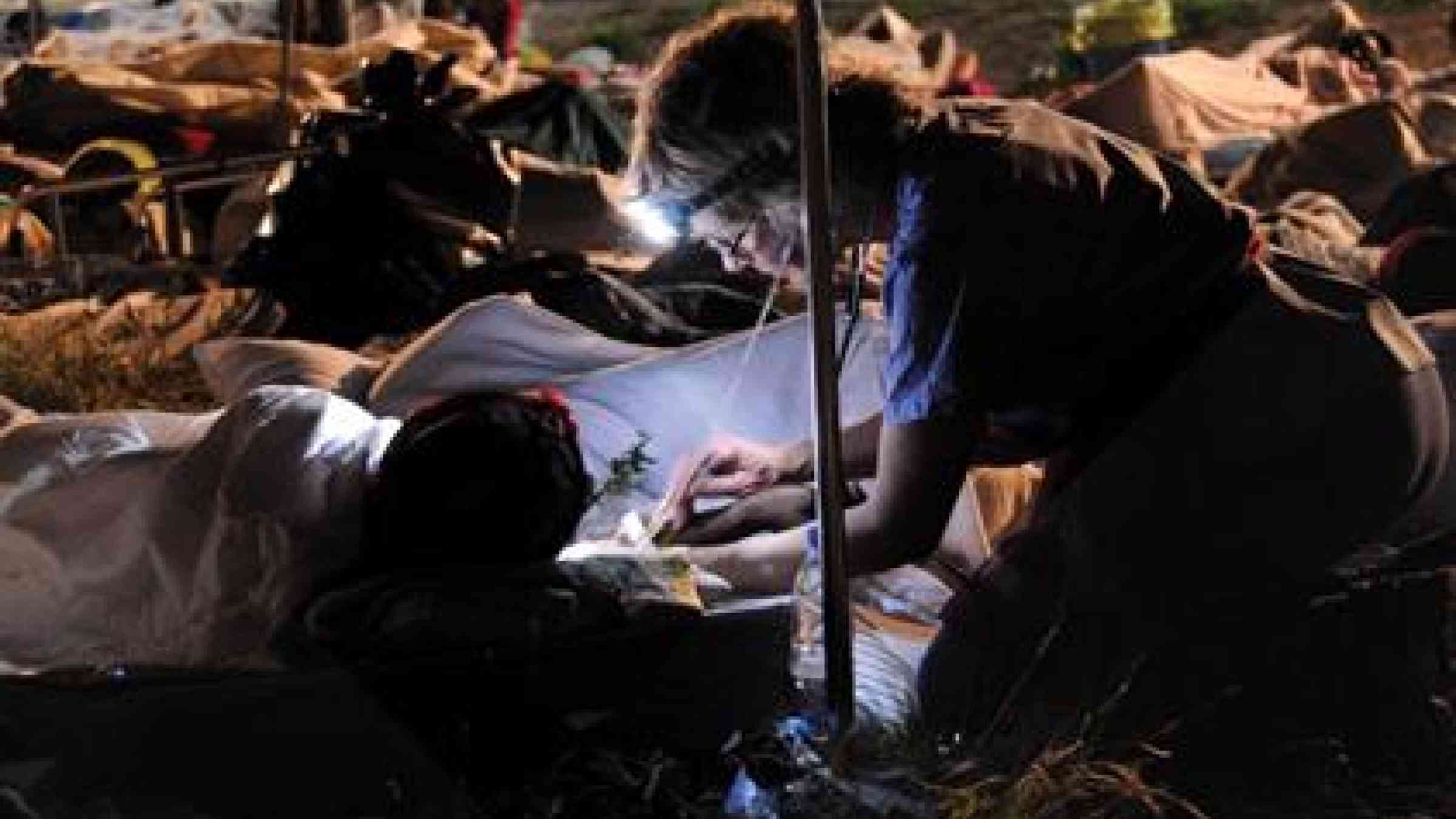Are we capable of learning the lessons of Haiti?

GENEVA, 1 February 2012 - An insightful new report on the 2010 Haiti earthquake offers a scathing critique of an international community which “has much to learn from the response in Haiti where it has shown an ability to repeat its errors and shortcomings from past disasters.”
Two years after the event, the PAHO Report: Health response to the earthquake in Haiti - Lessons to be learned for the next massive sudden-onset disaster provides a valuable analysis which should serve as a guide for risk reduction and response in other major metropolitan areas in dangerous seismic zones.
In the foreword, PAHO Director, Dr. Mirta Roses Periago pays tribute to the outpouring of generosity from the international community but observes:
“If the impact was unprecedented, the organization of the response was not. It followed the same chaotic pattern as past disasters. Information was scarce, decisions were not evidence-based, and overall sectoral coordination presented serious shortcomings. Management gaps noted in past crises were repeated and amplified in Haiti. The humanitarian community failed to put into practice the lessons learned”.
While valuable health assistance was provided by “each minimally prepared and equipped health responder”, the proliferation of actors “included a number of wholly unprepared or even incompetent health actors who bypassed the overburdened coordination mechanism. The WHO initiative to launch a global registration process of foreign medical teams and field hospitals is most timely.”
“The Republic of NGOs”
She adds: “Information and coordination management was a challenge that was not met adequately. One of the key lessons to be re-learned from the Haiti earthquake is that coordination can only be effective if the national authorities (civil protection, health and other line ministries) are equipped and truly assume the leadership and authority for coordination.
“External coordination mechanisms are most valuable when they can offer a modicum of order in the first days or weeks until the authorities recover from the impact. But only the government of an affected country has the legitimacy to establish and implement relief and recovery priorities.”
The publication, based on 150 interviews and evaluation of a wealth of published material, focuses on the first three months of the response phase but also presents an analysis of vulnerability and exposure prior to the catastrophe.
Haiti, despite being often described as “the Republic of NGOs”, was particularly vulnerable as “the focus of preparedness in Haiti was overwhelmingly on seasonal climatic events. Rare, but catastrophic events were not contemplated. The poorest countries are the least able and willing to invest in risk reduction, including in preparedness. Considering the urgency of everyday needs faced by these countries, the onus for risk reduction and disaster preparedness should be more on the international community.
“International agencies and donors should increase their efforts to focus the attention of health authorities on credible scenarios of major sudden-onset disasters.”
Staggering losses
The report reminds the reader again of the country’s staggering losses. The Haitian government reported that 222,570 people had died; over 300,000 had been injured while 1.3 million were displaced. Two other assessments, however, by the US Agency for International Development (USAID) and the University of Michigan put the number of deaths at 65,575 and 149,095 respectively.
The report stresses that the main lesson for future disasters, however, is not what the best estimate in Haiti was, but the need for transparent methodology to produce the official statistics.
Given UNISDR’s global campaign for safe schools and hospitals, it comes as a shock to be reminded that over 1,300 educational establishments and over 50 hospitals and health centres collapsed or were left unusable.
On a positive note, the report does identify some LRRD (Linking Relief, Recovery and Development) successes. In particular, it finds that “awareness and commitment to disaster risk reduction increased considerably”.
Safe hospitals
It also states that new health facilities “will comply with safety norms in the process of review. A joint World Bank and PAHO/WHO project will promote and monitor the development of guidelines and the implementation of the concept of safe hospitals as part of the reconstruction process.”
Other key findings in the report include the rise of sexual violence in the post-earthquake period but the emergency provided the Ministry of Health “with an opportunity to develop a strategy, albeit still under debate, to provide standardized care for victims of gender-based violence.”
According to PAHO: “There was a risk factor that did not get any attention: the arrival on the island of thousands of individuals from different parts of the world who could introduce a communicable disease. Nine months after the quake the first cases of cholera were detected”.
Over 7,000 people have since died in what is one of the worst outbreaks of cholera in history with over 500,000 people falling ill. The establishment since of a communicable disease surveillance system based on 51 sentinel stations is a first for Haiti.
At the two-year commemoration of the earthquake, UNISDR chief Margareta Wahlström said: “The tragedy confirmed that the authorities need to take the subject of risk reduction seriously, even in cities and regions that may not have experienced earthquakes or related tsunamis for hundreds of years. The UN is adapting its approaches to assessing natural hazards risks to ensure that such potentially devastating events are better understood.”